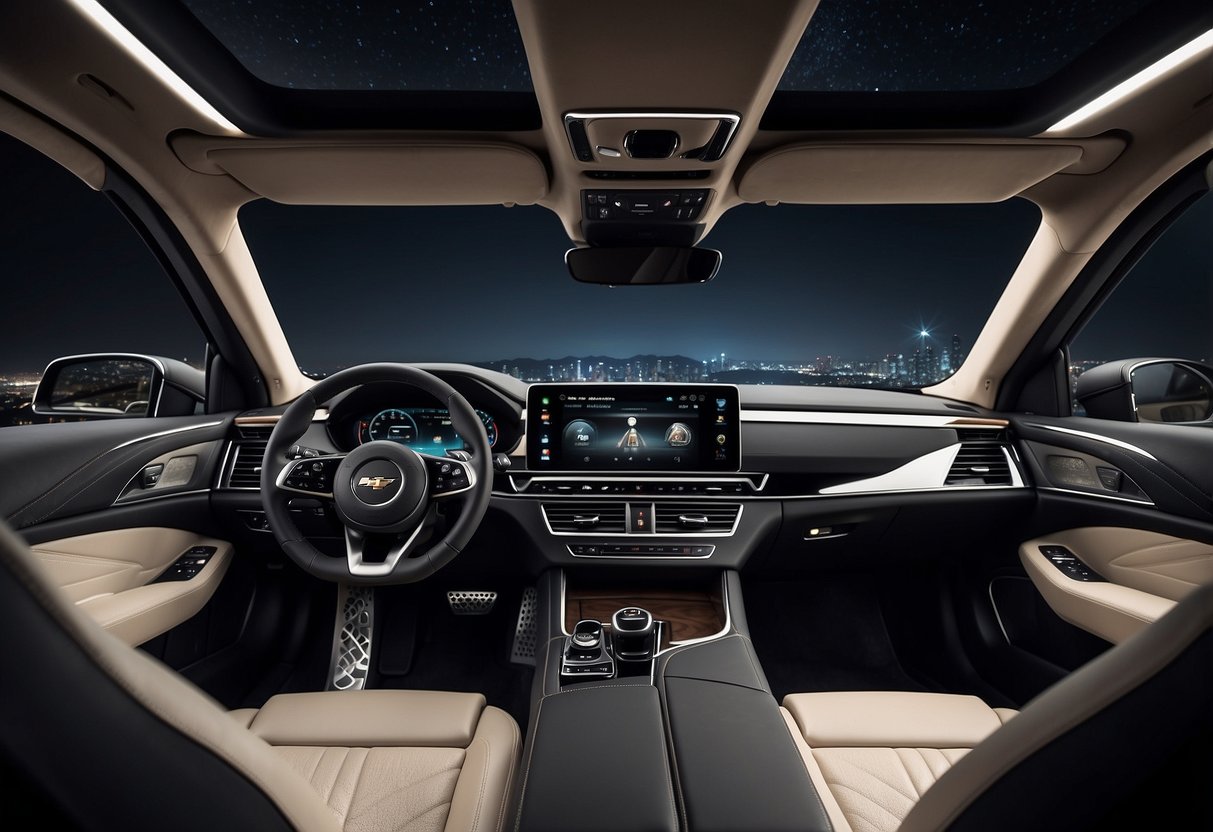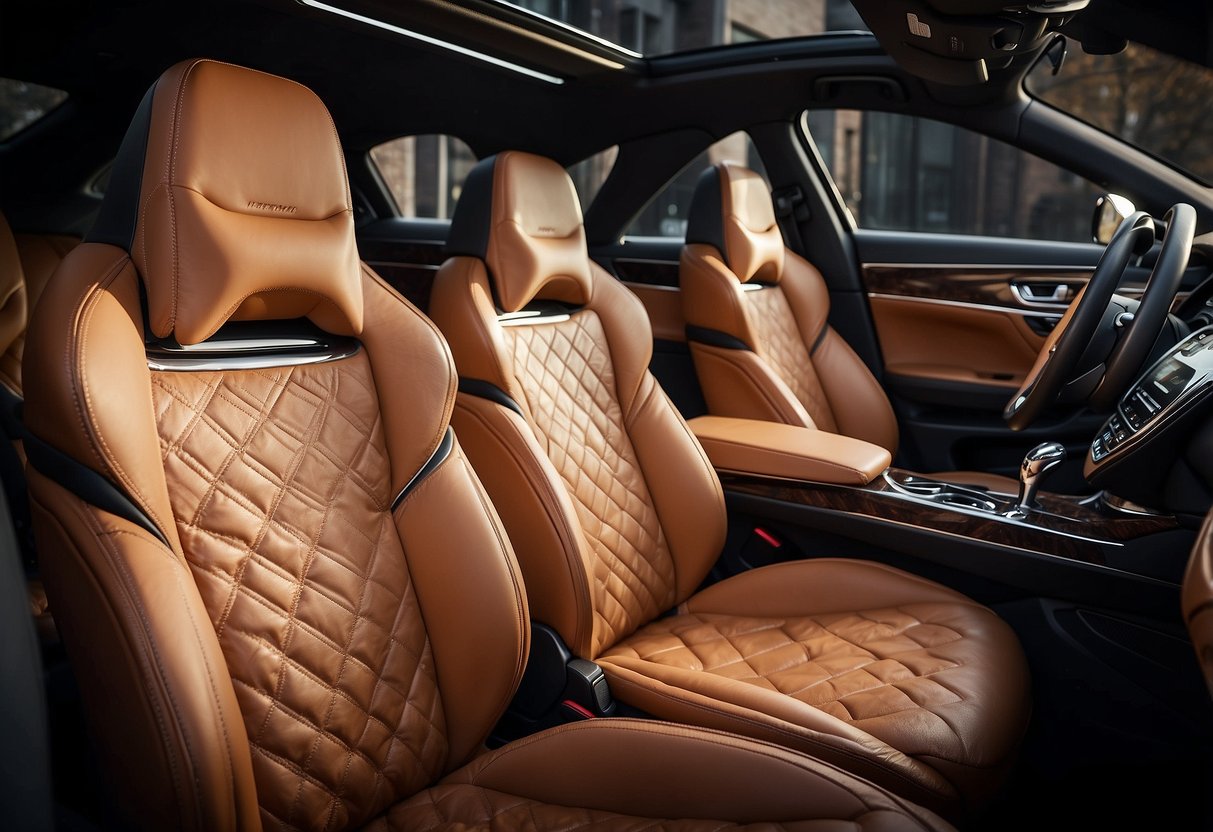
Infotainment and Connectivity Features
Luxury cars are incorporating the latest innovations in infotainment and connectivity. These features focus on delivering intuitive touchscreens, seamless integration with smartphones, and state-of-the-art infotainment systems to enhance the driving experience.
Intuitive Touchscreen Interfaces
Modern luxury vehicles are equipped with advanced touchscreen interfaces that prioritize user-friendly design. These touchscreens often feature high-resolution displays that provide clear visuals, making it easier for drivers to interact with the system. Multi-touch capabilities allow users to zoom, swipe, and navigate the interface similarly to a smartphone.
Frequent updates to the software ensure these systems remain current, providing new functionalities and improved performance. Many brands also integrate touch feedback to offer a tactile response, reducing the need for drivers to take their eyes off the road.
Seamless Smartphone Integration
Seamless connectivity between a driver’s smartphone and the car’s infotainment system is a hallmark of modern luxury vehicles. Manufacturers offer compatibility with popular platforms such as Apple CarPlay and Android Auto. These features allow drivers to access their phone’s apps, music, and navigation systems directly from the car’s touchscreen.
Wireless integration is becoming more common, eliminating the need for physical cables and making the connection process simpler. Voice assistant integration is another key aspect, enabling hands-free control of various functions, which enhances convenience and safety during the drive.
Cutting-edge Infotainment Systems
Infotainment systems in luxury cars are designed to provide a comprehensive multimedia experience. These systems often include premium audio setups, such as those by Bose or Bang & Olufsen, delivering high-quality sound throughout the cabin. Navigation systems are enhanced with real-time traffic updates and predictive routing, offering a stress-free driving experience.
Many infotainment setups come with advanced connectivity options, including Wi-Fi hotspots and multiple USB ports, ensuring that all passengers can stay connected. Customizable settings allow drivers to personalize the interface to match their preferences, making the driving experience uniquely tailored to individual needs.
Interior Lighting and Ambiance
Luxury car interiors have evolved significantly, with interior lighting playing a crucial role in enhancing comfort and design. Interior lighting encompasses ambient lighting effects, illuminated displays and features, and the role of lighting in creating a sense of luxury.
Ambient Lighting Effects
Ambient lighting sets the mood inside luxury vehicles, offering a personalized and elegant atmosphere. Manufacturers often provide customizable options, allowing passengers to select colors and intensity levels to match their preferences. This feature not only adds style but also improves functionality by ensuring soft, glare-free illumination during night drives.
Advanced ambient lighting systems use LED technology to create dynamic light patterns and harmonize with the car’s interior design. Companies such as Mercedes-Benz and BMW lead the industry with sophisticated ambient lighting that can sync with music or driving modes. These systems enhance the overall driving experience by creating a calming or invigorating atmosphere as desired.
Illuminated Displays and Features
Modern luxury cars integrate illuminated displays and features that elevate the overall interior experience. Digital dashboards, touchscreen infotainment systems, and backlit controls are designed with user-friendly interfaces that are easy to navigate, even in the dark. The use of OLED and LED screens ensures that displays are bright, clear, and energy-efficient.
Moreover, ambient lighting often extends to these displays, providing a seamless and cohesive look. For instance, the center console and door panels may feature subtle light strips that create a unified aesthetic. Brands like Audi and Lexus excel in using illuminated displays to create an intuitive and visually appealing environment.
The Role of Lighting in Luxury Perception
Lighting plays a vital role in shaping the perception of luxury within a car’s interior. Well-designed lighting enhances the materials’ richness, highlighting the fine details of leather, wood, and metal trims. Subdued and strategically placed lights create shadows and highlights that accentuate the overall elegant design.
In high-end vehicles, lighting is engineered to elicit emotional responses, making occupants feel relaxed or invigorated. For example, Rolls-Royce employs star-like roof lighting to simulate a night sky, offering a unique and serene ambiance. This thoughtful use of lighting underscores the sophisticated essence of luxury automobiles.
Luxury Materials and Craftsmanship

The essence of luxury car interiors lies in the materials used and the craftsmanship involved. These elements define the visual and tactile experience, setting high-end vehicles apart through exceptional quality and meticulous attention to detail.
Exquisite Leatherwork and Stitching
Leather continues to be a hallmark of luxury car interiors. Premium automakers often source the finest hides from specific regions known for their quality. For instance, German manufacturers may use Nappa leather, prized for its smooth texture and durability. Bespoke stitching patterns enhance the aesthetic appeal, with some brands offering custom options. Whether employing intricate cross-stitching or contrasting thread colors, the precision in each stitch speaks volumes about the dedication to detail. These elements not only enhance comfort but also contribute significantly to the vehicle’s overall ambiance.
Use of Metals and Precious Materials
The integration of metals such as aluminum, stainless steel, and even gold elevates the interior design of luxury cars. These metals are not just about opulence; they are also chosen for their strength and longevity. Brushed aluminum is often used for trim elements, providing a sleek, modern look. Gold or platinum accents may adorn controls and switches, adding a touch of exclusivity. Wood has also made a remarkable comeback in recent years, with options like walnut and oak being meticulously selected and handcrafted to perfection. These materials are seamlessly integrated into the design, achieving a balance of elegance and functionality.
Handcrafted Details and Finishes
Handcraftsmanship remains a cornerstone of luxury car interiors, offering a level of personalization unattainable by mass production. Skilled artisans spend countless hours refining every panel, stitch, and trim piece. Handcrafted wood veneers are matched to create seamless patterns across the dashboard and door panels. Unique finishes such as piano black lacquer or satin nickel plating are applied to enhance the tactile experience. The touchpoints, whether they are door handles or gear shifters, often feature hand-polished surfaces, ensuring a premium feel. This meticulous attention to detail results in an environment that exudes sophistication and exclusivity.



